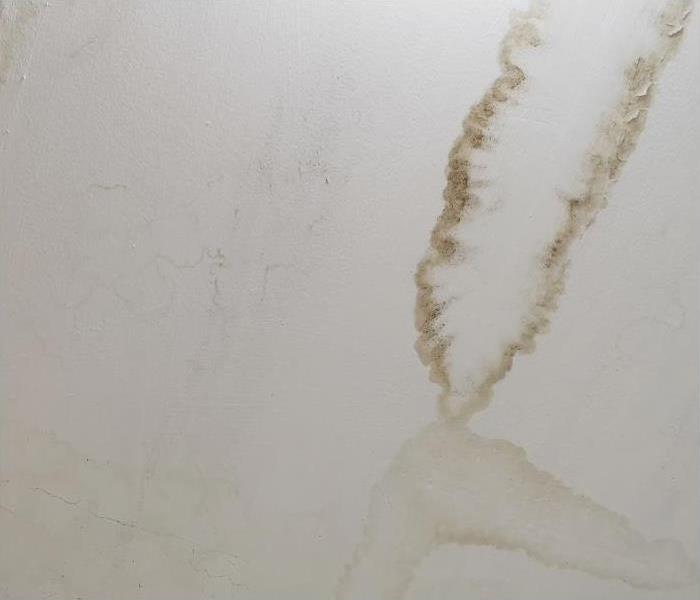5 Great Steps To Take When Experiencing Wet Drywall
11/26/2021 (Permalink)
Wet drywall needs to be handled carefully to prevent further damage.
Water damage is a property owner's worst nightmare because there are only about 48 hours before mold growth begins to form. On top of that, whenever a home or business experiences water damage, you will likely find wet drywall and other structural damages.
Drywall is a wall building material made of gypsum plaster, commonly used on interior walls and ceilings. The term wet drywall describes a scenario where water has entered your walls, and they are absorbing moisture, usually because of a pipe burst or extreme flooding. If you have experienced this type of damage in your home or business, there are some steps that you should take immediately upon discovery.
In the following blog post, we will go through five great steps you should take when your home or business has experienced wet drywall damage. The purpose of this blog post is to help anyone with a small amount of drywall damage; for severe water damage, you should contact the professionals at SERVPRO ASAP.
The five steps to take
1) Assess the damage
The first thing you should do is assess the damage. Check to see if the moisture is only localized or spread out. The more water damage that has occurred, the longer it will take to clean up. Check for wet drywall along baseboards, wall studs, and ceilings.
Be sure to also check for mold or mildew growth on surfaces where moisture has come into contact with them (carpeting, walls). Mold damage will need to be cleaned thoroughly before proceeding with any other tasks.
To help assess the damage, you can find a moisture meter online or at your local hardware store that checks drywall moisture levels.
2) Remove all standing water
The next step is to remove all standing water with a wet vac. It is best to strategically place fans to speed up the drying process and ensure proper ventilation to prevent mold growth. Mold thrives in warm moist environments where the air is stagnant.
3) Remove any wet drywall
Once all the standing water has been removed, you will want to remove any wet drywall. You should use a drywall knife to help speed up the process, but be careful not to damage drywall in good condition.
4) Lower humidity levels
You will want to lower the humidity levels in the area that the water damage occurred because high moisture content can cause mold growth. You can purchase a dehumidifier online or at your local hardware store to accomplish this task.
5) Install new drywall
After completing the first four steps, you can now install new drywall in the areas needed.
Water damage can be hard to deal with, but if you follow these five steps, there is no reason why your home or business will not be back up and running in no time!
What to do when there is extensive water damage?
It is best to call for the professionals at SERVPRO of Union, Towns, Fannin & Gilmer Counties if you are dealing with extensive water damage where there is a lot of wet drywall that needs to be restored. With the help of our IICRC certified SERVPRO technicians, we will be able to bring your property back up to how it was before the damages occurred.
In most cases, water damages will be covered by your property insurance provider, so be sure to refer to your insurance policy for any terms and conditions.
Please contact us today if you are currently in the middle of a water damage disaster and need professional help.






 24/7 Emergency Service
24/7 Emergency Service
